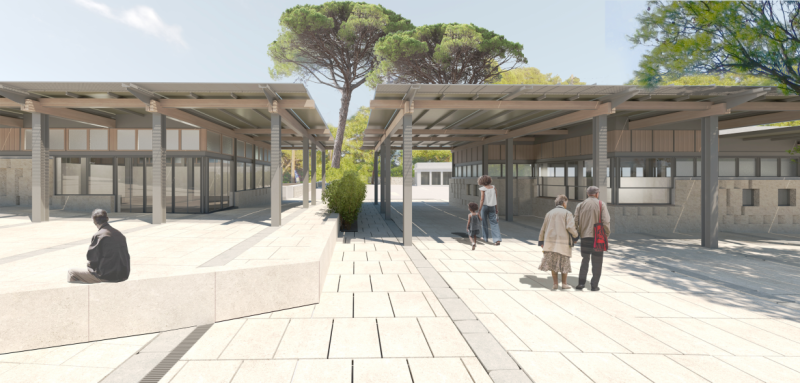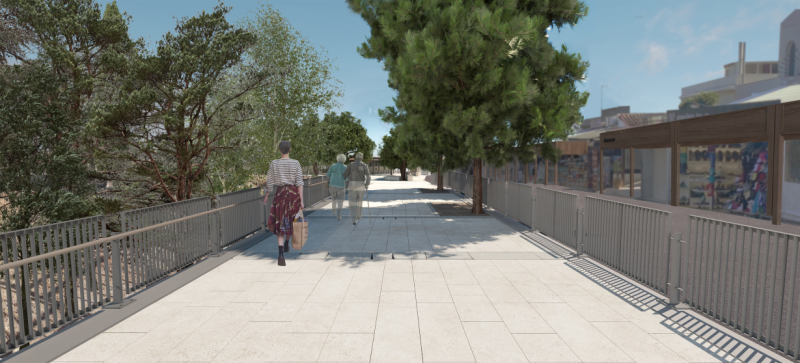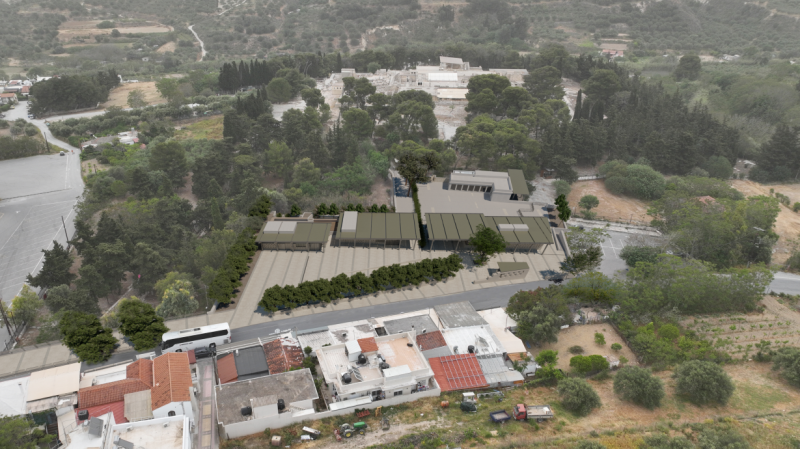Preliminary studies were prepared for the connection of the archaeological site with the urban and peri-urban tissue of Heraklion
The project of remodeling the entrance to the archaeological site of Knossos began as the preliminary studies – architectural, static, electromechanical – and the geotechnical study were prepared, as part of a research program, for the connection of the archaeological site with the urban and peri-urban fabric of Heraklion.
The goal of the Ministry of Defense is the permanent management of functional and aesthetic issues, allowing the overall upgrade of the archaeological site.
The project, which develops in two phases and has a total budget of approximately 3,500,000 euros.
The Minister of Culture, Lina Mendoni, said: “Knossos is the second most visited archaeological site in Greece, after the Acropolis. The promotion of the Minoan Palace – and five other palace complexes of the same era – is a priority for the Ministry of Culture.
The Minoan Palaces are our country’s candidacy, in 2025, for inclusion in the UNESCO World Heritage List.
With the aim of including the Minoan Palaces in a cultural route that highlights and assimilates developmentally the dynamics of this unique heritage, a series of interventions have been designed to restore and highlight these unique architectural ensembles.
In Aprince of Knossosrestoration operations are in progress, in important monuments of the archaeological site, but also projects to improve the tour and accessibility. The present study is part of an overall project of reorganization of the archaeological site, but also of the wider urban space, which aims to arrange the entrance-exit areas, solving functional and aesthetic problems related to the attitude, movement and service of visitors .
Our goal is the overall reformation of the wider area and the enhancement of the experience of visiting the site, as befits the archaeological and historical value of the specific palace. I would like to thank the regional governor of Crete, Stavros Arnautakis, and the relevant departments of the Region for the close and extremely
constructive cooperation in the formation of the Integrated Spatial Investment of the Minoan Palaces and its inclusion in the actions, which are planned to be financed by the Regional Operational Program of Crete – ESPA 2021-2027.”
The purpose of this study is to redesign the entrance area for the convenience of visitors, with sustainable, durable and energy-independent infrastructures, as well as with respect for history. Based on the preliminary study, the point where tickets are currently checked and where the tour route starts and ends is retained as is the
movement of visitors inside the Palace. However, the entire area is being redesigned, from the southern boundary of the large car park (north of ‘Royal Street’) to the employee car park to the south and from the access road (west) to the starting point of the tour route. The formation of a new wider square is planned
in the entrance area, with the separation of incoming and outgoing traffic, and the construction of three new ground-floor public service buildings, in two implementation phases. The footpath from the north car park to the entrance area, which runs alongside the end of the underlying ‘Royal Street’, is being widened. The project is designed to
implemented in two phases and with a time horizon of the second phase, in 2030.
Source :Skai
I am Frederick Tuttle, who works in 247 News Agency as an author and mostly cover entertainment news. I have worked in this industry for 10 years and have gained a lot of experience. I am a very hard worker and always strive to get the best out of my work. I am also very passionate about my work and always try to keep up with the latest news and trends.













